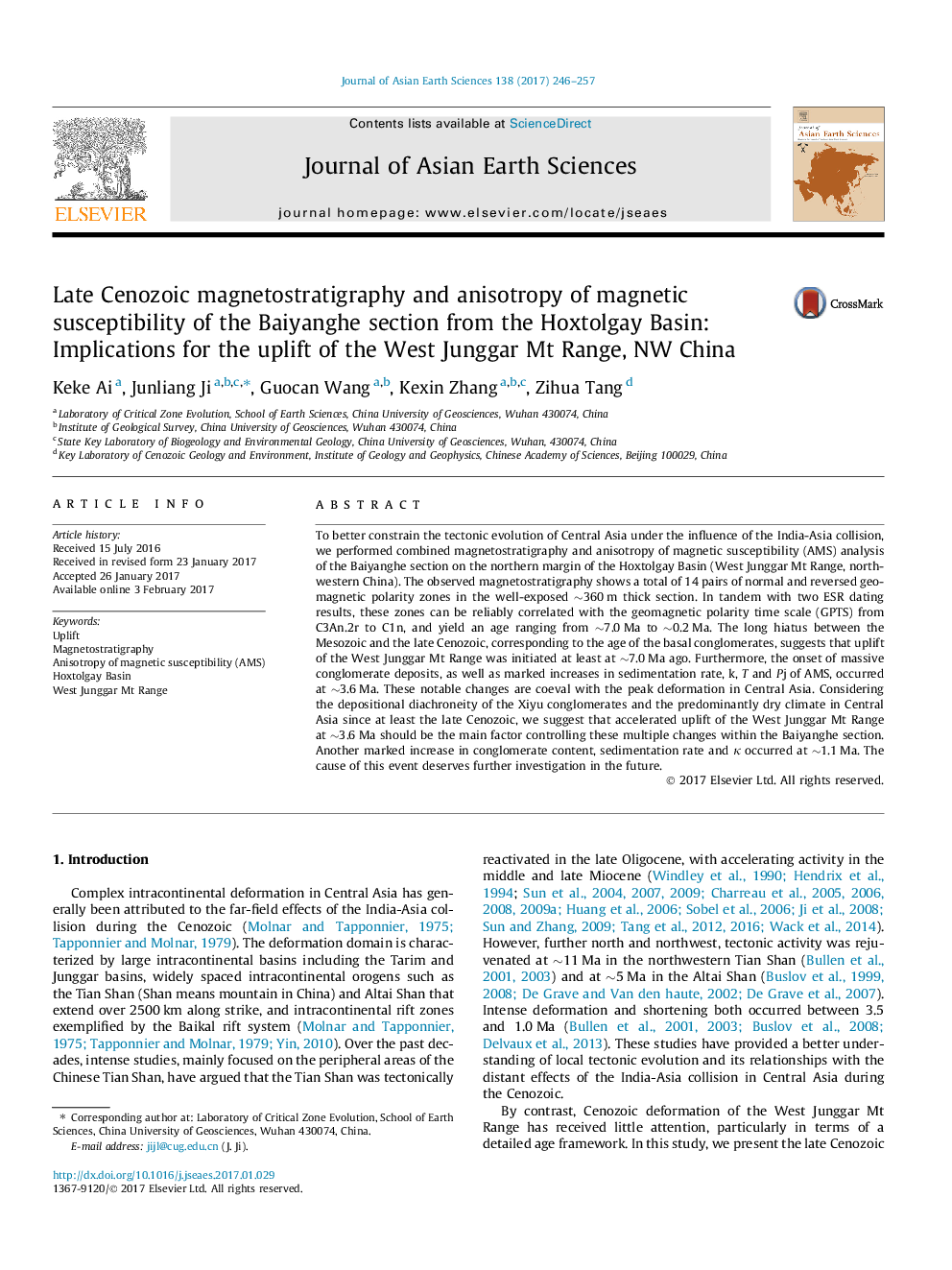| کد مقاله | کد نشریه | سال انتشار | مقاله انگلیسی | نسخه تمام متن |
|---|---|---|---|---|
| 5786051 | 1640333 | 2017 | 12 صفحه PDF | دانلود رایگان |

- The Baiyanghe Section in the Hoxtolgay Basin, West Junggar Range, is 360Â m thick.
- The section was constrained by magnetostratigraphy to be between 7.0 to 0.2Â Ma.
- This study reveals the uplift in the West Junngar Mt Range began before 7.0Â Ma.
- The uplift in the West Junngar Mt Range accelerated since ca. 3.6Â Ma.
- Thick conglomerates were deposited since 3.6Â Ma, driven by tectonic activities.
To better constrain the tectonic evolution of Central Asia under the influence of the India-Asia collision, we performed combined magnetostratigraphy and anisotropy of magnetic susceptibility (AMS) analysis of the Baiyanghe section on the northern margin of the Hoxtolgay Basin (West Junggar Mt Range, northwestern China). The observed magnetostratigraphy shows a total of 14 pairs of normal and reversed geomagnetic polarity zones in the well-exposed â¼360 m thick section. In tandem with two ESR dating results, these zones can be reliably correlated with the geomagnetic polarity time scale (GPTS) from C3An.2r to C1n, and yield an age ranging from â¼7.0 Ma to â¼0.2 Ma. The long hiatus between the Mesozoic and the late Cenozoic, corresponding to the age of the basal conglomerates, suggests that uplift of the West Junggar Mt Range was initiated at least at â¼7.0 Ma ago. Furthermore, the onset of massive conglomerate deposits, as well as marked increases in sedimentation rate, k, T and Pj of AMS, occurred at â¼3.6 Ma. These notable changes are coeval with the peak deformation in Central Asia. Considering the depositional diachroneity of the Xiyu conglomerates and the predominantly dry climate in Central Asia since at least the late Cenozoic, we suggest that accelerated uplift of the West Junggar Mt Range at â¼3.6 Ma should be the main factor controlling these multiple changes within the Baiyanghe section. Another marked increase in conglomerate content, sedimentation rate and κ occurred at â¼1.1 Ma. The cause of this event deserves further investigation in the future.
153
Journal: Journal of Asian Earth Sciences - Volume 138, 1 May 2017, Pages 246-257